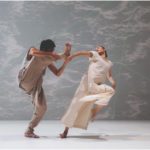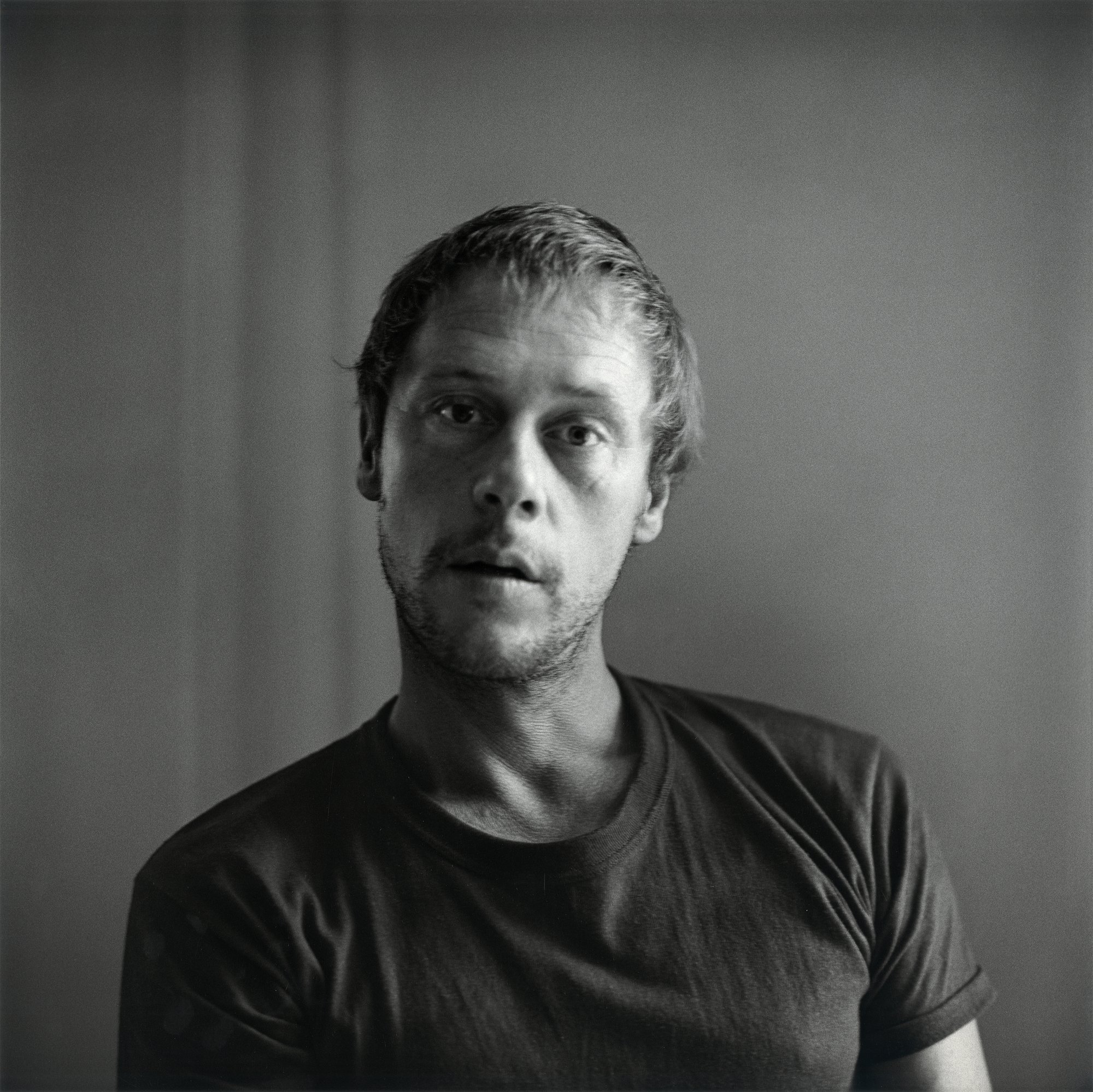Vertical 14 (Ajarani, RR)
1984 - Photography (Photography)
57 x 38.5 cm
Claudia Andujar
In 1980, with the construction of highways in Indigenous territories, an epidemic was brought to the Yanomami region. As the Yanomami do not have first names, it was necessary to give them numbers to indicate that they had already been vaccinated and identify each one for their medical records. From this series of events, Claudia Andujar’s Marcados series was born: what was supposed to be a mere photographic record, for organizational purposes, ended up raising a big question about the “labels” given to people in the construction of societies. The series includes 82 photos of the expedition and was initially published together with texts and reports by the artist in the Commission for the Creation of the Yanomami Park. Vertical 14 (Ajarani, RR) from the Marcados series gives a glimpse into the intimacy, trust, and understanding Andujar has built with the Yanomami, one of Brazil’s largest Indigenous groups. According to the artist, this is related to her personal history. Born in Europe, the artist lived through World War II. Her entire family was killed in a concentration camp by the Nazi regime, where people were marked to die. Andujar’s portraits with numbers became a tool for the survival of the Yanomami people and culture. For the photographer, “They are marked to live, not to die.” These portraits, taken in the 1980s are as relevant as ever in a post-pandemic world. The raising of new sanitary borders render social injustices in Brazil even more visible. The Brazilian demarcated territory, for which Andujar fought all her life, is now suffering once more with an increase in malaria, Covid-19, and chronic child malnutrition, in addition the Indigenous populations are facing a significant invasion of miners, encouraged by those in power and extractivist corporations operating in the rainforest.
Claudia Andujar was born in Switzerland in 1931, and then moved to Oradea, on the border between Romania and Hungary, where her paternal family, of Jewish origin, lived. With the persecution of Jews during World War II, she fled with her mother to Switzerland and then emigrated to the United States. In 1955, she came to Brazil. Having spent most of her life in a permanently foreign condition, Claudia turned photography into a working tool and a means of contact with the country. Over the following decades, she travelled all over Brazil and collaborated with national and international magazines such as Life, Aperture, and Look, among many others. For almost seven decades, Andujar has been thoroughly involved with the Yanomami community in the Amazon; grappling with the challenges of visually interpreting their daily lives in sharp black and white imagery, as well as attempting to visually translate their shamanic culture through more experimental techniques like flash devices, oil lamps, and infrared film. Her works deliberately stands in the threshold of visual collage, documentary, and activism, perceiving photography as a tool for political change and raising awareness to the complexity of the daily life and traditions of her subjects, their restless resistance and dignity, and the ongoing injustices they have been subjected to for centuries. Andujar’s images of life in the rainforest and her political involvement with Indigenous causes made her an internationally recognized leading voice in defense of the Indigenous people of Brazil, whose land has been in constant threat by development and illegal mining activities, and more recently by a far-right government that have been actively revoking the rights of Brazilian native populations.
Colors:
Related works sharing similar palette

© » KADIST
Rometti Costales
2013The three cut-outs are made of three aerial photographs coming from the archives of the Ecuadorian Military Geographic Institute...

© » KADIST
Teppei Kaneuji
2014In his White Discharge series (2002 to today), arguably his best known works, Kaneuji assembles old toys and plastic scarps into dramatic mounded heaps and covers the surface with white plastic resin, drawing on allusions to landfills, commodity fetishism, and creative repurposing...

© » KADIST
Tanatchai Bandasak
2019Central Region by Tanatchai Bandasak is a meditation on materiality and time-based media centres on the mysterious, prehistoric ‘standing stones’ of Hintang in Northern Laos: little-studied megaliths which have survived thousands of years of political change and the cataclysmic carpet-bombing of Laos by the United States during the Cold War...

© » KADIST
Camel Collective
2018Gated Commune , a video by Camel Collective, is a critique of the complex, and often obtuse, language used to describe sustainable development projects...

© » KADIST
Huang Xiaopeng
2011Four knives appearing as if thrown at the wall to alleviate frustration and boredom, form rhythmic shadows and markings of time above a translated phrase boldly printed in simplified Chinese and English...

© » SLASH PARIS
Gildas Le Reste — & Guests — Catherine Putman Gallery — Exhibition — Slash Paris Login Newsletter Twitter Facebook Gildas Le Reste — & Guests — Catherine Putman Gallery — Exhibition — Slash Paris English Français Home Events Artists Venues Magazine Videos Back Previous Next Gildas Le Reste — & Guests Exhibition Drawing, print, painting Gildas Le Reste, Notes de voyage #1, 2023 Ink on paper mounted on canvas Gildas Le Reste & Guests Ends in 27 days: January 27 → March 9, 2024 Galerie Catherine Putman has pleasure in making a double invitation to Gildas Le Reste as both artist and exhibition curator...

© » SLASH PARIS
Gildas Le Reste — & Guests — Galerie Catherine Putman — Exposition — Slash Paris Connexion Newsletter Twitter Facebook Gildas Le Reste — & Guests — Galerie Catherine Putman — Exposition — Slash Paris Français English Accueil Événements Artistes Lieux Magazine Vidéos Retour Précédent Suivant Gildas Le Reste — & Guests Exposition Dessin, estampe, peinture Gildas Le Reste, Notes de voyage #1, 2023 Encre sur papier marouflé sur toile Gildas Le Reste & Guests Encore 27 jours : 27 janvier → 9 mars 2024 La galerie Catherine Putman est heureuse de proposer une double invitation à Gildas Le Reste, comme artiste et commissaire d’exposition...

© » KADIST
Hank Willis Thomas
2012Intentionally Left Blanc alludes to the technical process of its own (non)production; a procedure known as retro-reflective screen printing in which the image is only fully brought to life through its exposure to flash lighting...

© » ARTS EQUATOR
Cloud Gate Dance Theatre of Taiwan: Between East and West, Heaven and Earth | ArtsEquator Thinking and Talking about Arts and Culture in Southeast Asia Articles Liu Chen-hsiang April 8, 2019 By Stephanie Burridge (800 words, four-minute read) Sustainability, remaining fresh and engaging is challenging in the present day, content-saturated global world...

© » KADIST
Karan Shrestha
2017After the decade-long conflict (1996-2006) that ended with Nepal becoming a Federal Democratic Republic, political unrest and weak governance continued to mark the country’s future as daily life repeatedly witnessed ruptures...

© » KADIST
Du Zhenjun
2010The Tower of Babel is an installation of large-format photographs that forces the audience to occupy a central position through its monumental scale...

© » KADIST
Mario Garcia Torres
2004Mario Garcia Torres imagines cinematic devices to replay stories occasionally forgotten by Conceptual art...








